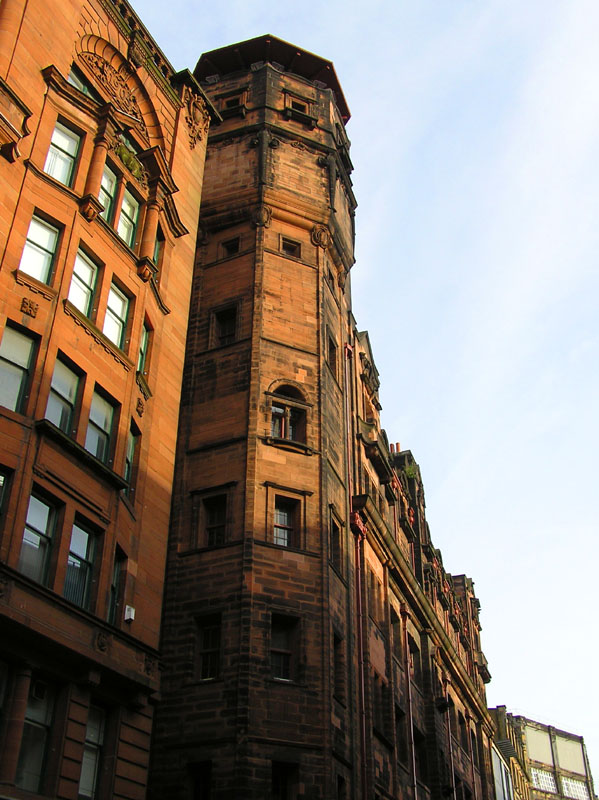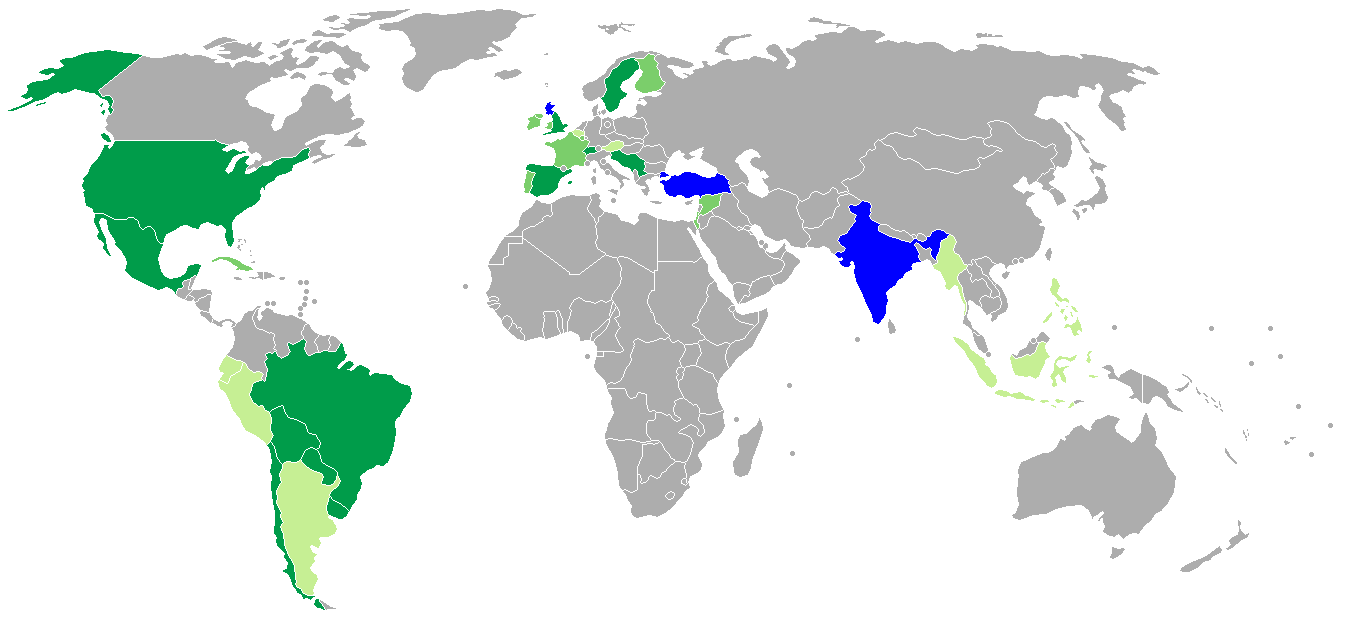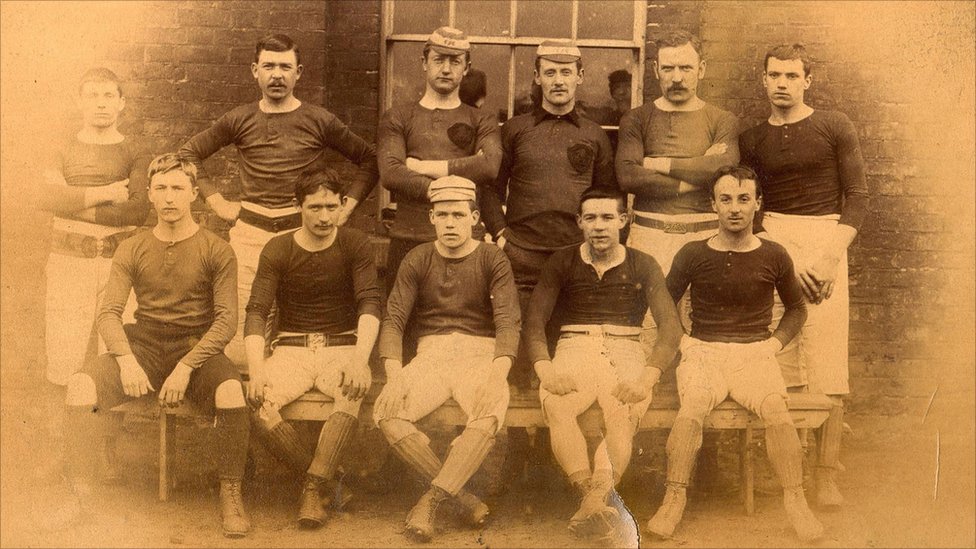|
Alexander Linwood
Alexander Bryce Linwood (13 March 1920 – 26 October 2003) was a Scottish footballer who played for St Mirren, Middlesbrough, Hibernian, Clyde, Greenock Morton and the Scotland national team. Career Born in the tiny mining settlement of Drumsmudden, near Drongan in Ayrshire, Linwood began working in the mines at the age of 14. He played schools and juvenile football before joining the newly formed Muirkirk Juniors in 1938. Linwood signed for St Mirren the same year, however on the outbreak of World War II, the player was forced to resume his mining career for the war effort. A centre-forward, Linwood continued to play wartime football for St. Mirren and also played in an unofficial international match against England at Maine Road in 1943 which the Scots lost 8–0. In all, Linwood scored 165 goals in 236 competitive matches for St Mirren between 1938–1946 and remains the club's second top goalscorer of all time. He finished as the team's top scorer in all seven seasons ... [...More Info...] [...Related Items...] OR: [Wikipedia] [Google] [Baidu] |
Drongan
Drongan is a former mining village in East Ayrshire, some east of Ayr and west of Cumnock. It had a population of 4686 in 2011.https://www.scotlandscensus.gov.uk/ods-analyser/jsf/tableView/tableView.xhtml History The earliest references to Drongan lands are to be found in documents dating to the 14th century. In the 1390s, these lands were granted to the Craufurds, whose stronghold for 250 years was Drongan Castle. The remains of the castle can be seen on Drongan Mains Farm. The estate passed from the Craufurds to the Cunninghames, then to the Earls of Stair. About 1760, the Drongan Estate was purchased by the Smith family – who built Drongan House, set up a pottery near Coalhall and introduced pioneering agricultural improvements. The village of Drongan (originally known as Taiglum) grew up near the early coal mine and by 1900 consisted of 65 houses and a few shops. These rows at Taiglum were demolished in the 1930s and the inhabitants were housed in new housing scheme ... [...More Info...] [...Related Items...] OR: [Wikipedia] [Google] [Baidu] |
World War II
World War II or the Second World War, often abbreviated as WWII or WW2, was a world war that lasted from 1939 to 1945. It involved the vast majority of the world's countries—including all of the great powers—forming two opposing military alliances: the Allies and the Axis powers. World War II was a total war that directly involved more than 100 million personnel from more than 30 countries. The major participants in the war threw their entire economic, industrial, and scientific capabilities behind the war effort, blurring the distinction between civilian and military resources. Aircraft played a major role in the conflict, enabling the strategic bombing of population centres and deploying the only two nuclear weapons ever used in war. World War II was by far the deadliest conflict in human history; it resulted in 70 to 85 million fatalities, mostly among civilians. Tens of millions died due to genocides (including the Holocaust), starvation, ma ... [...More Info...] [...Related Items...] OR: [Wikipedia] [Google] [Baidu] |
The Herald (Glasgow)
''The Herald'' is a Scottish broadsheet newspaper founded in 1783. ''The Herald'' is the longest running national newspaper in the world and is the eighth oldest daily paper in the world. The title was simplified from ''The Glasgow Herald'' in 1992. Following the closure of the ''Sunday Herald'', the ''Herald on Sunday'' was launched as a Sunday edition on 9 September 2018. History Founding The newspaper was founded by an Edinburgh-born printer called John Mennons in January 1783 as a weekly publication called the ''Glasgow Advertiser''. Mennons' first edition had a global scoop: news of the treaties of Versailles reached Mennons via the Lord Provost of Glasgow just as he was putting the paper together. War had ended with the American colonies, he revealed. ''The Herald'', therefore, is as old as the United States of America, give or take an hour or two. The story was, however, only carried on the back page. Mennons, using the larger of two fonts available to him, put it in t ... [...More Info...] [...Related Items...] OR: [Wikipedia] [Google] [Baidu] |
1949 Scottish Cup Final
The 1948–49 Scottish Cup was the 64th staging of Scotland's most prestigious football knockout competition. The final was played between holders Rangers and Clyde at Hampden Park on 23 April 1949. Rangers won 4–1 to retain the Cup.Penalty-kick Mystery The Glasgow Herald, 25 April 1949 Rangers also won both the and the , the first time a club claimed the national ' |
Shawfield
Shawfield is an industrial/commercial area of the Royal Burgh of Rutherglen in South Lanarkshire, Scotland, located to the north of the town centre. It is bordered to the east by the River Clyde, to the north by the Glasgow neighbourhood of Oatlands and the adjacent Richmond Park, to the south-west by Glasgow's Polmadie and Toryglen districts, and to the south-east by Rutherglen's historic Main Street and its Burnhill neighbourhood, although it is separated from these southerly areas by the West Coast Main Line railway tracks and the M74 motorway. A road bridge connects Shawfield to the Dalmarnock, Bridgeton and Glasgow Green areas. Shawfield is a familiar name to many Scottish sports fans, as the stadium of that name is the national venue for greyhound racing and the former home of Clyde F.C. Early history Documentation states that in 1611 the estate of Shawfield was in the hands of the family of Claud Hamilton. His grandson James Hamilton was forced to sell the estate and ... [...More Info...] [...Related Items...] OR: [Wikipedia] [Google] [Baidu] |
1950 FIFA World Cup Qualification
A total of 34 teams entered the qualification rounds of the 1950 FIFA World Cup, competing for a total of 16 spots in the final tournament. Brazil, as the hosts, and Italy, as the defending champions, qualified automatically, leaving 14 spots open for competition. The remaining 32 teams were divided into 10 groups, based on geographical considerations, as follows: *Groups 1 to 6 – Europe: ''7 places'', contested by 18 teams (including Israel and Syria). *Groups 7 to 9 – The Americas: ''6 places'', contested by 10 teams. *Group 10 – Asia: ''1 place'', contested by 4 teams. However, due to the withdrawals of India, Scotland and Turkey after qualifying, only 13 teams actually competed in the final tournament. A total of 19 teams played at least one qualifying match. A total of 26 qualifying matches were played, and 121 goals were scored (an average of 4.65 per match). Listed below are the dates and results of the qualification rounds. Groups The 10 groups had different rul ... [...More Info...] [...Related Items...] OR: [Wikipedia] [Google] [Baidu] |
1949–50 British Home Championship
1949–50 British Home Championship was one of the most significant competitions of the British Home Championship football tournament. This year saw the competition doubling up as Group 1 in the qualifying rounds for the 1950 FIFA World Cup. It was the first time that either England, Wales, Scotland or Ireland (IFA) had entered a World Cup competition. It was also a significant moment in the history of Irish football as it was the last time that the (Northern) Irish Football Association entered a team featuring players born in both Northern Ireland and what is now the Republic of Ireland. Both England and Scotland began well, the Scots beating Ireland 8–2 at Windsor Park while England beat Wales 4–1 in Cardiff. Both teams continued their dominance in the second round of matches, Scotland beating Wales 2–0 whilst Ireland were again heavily defeated, this time losing 9–2 to England. In the final round of games Ireland and Wales gained some consolation points with a goalless ... [...More Info...] [...Related Items...] OR: [Wikipedia] [Google] [Baidu] |
Wales National Football Team
) , Association = Football Association of Wales (FAW) , Confederation = UEFA (Europe) , Coach = Rob Page , Captain = Gareth Bale , Most caps = Gareth Bale (111) , Top scorer = Gareth Bale ( 41) , Home Stadium = Cardiff City Stadium , FIFA Trigramme = WAL , FIFA Rank = , FIFA max = 8 , FIFA max date = October 2015 , FIFA min = 117 , FIFA min date = August 2011 , Elo Rank = , Elo max = 3 , Elo max date = 1876~1885 , Elo min = 88 , Elo min date = March 2011 , pattern_la1 = _wal22h , pattern_b1 = _wal22h , pattern_ra1 = _wal22h , pattern_sh1 = _wal22h , pattern_so1 = _3_stripes_white , leftarm1 = FF0000 , body1 = FF0000 , rightarm1 = FF0000 , shorts1 = FFFFFF , socks1 = FF0000 , pattern_la2 = _wal22a , ... [...More Info...] [...Related Items...] OR: [Wikipedia] [Google] [Baidu] |
Cap (sport)
In sport, a cap is a player's appearance in a game at international level. The term dates from the practice in the United Kingdom of awarding a cap to every player in an international match of rugby football and association football. In the early days of football, the concept of each team wearing a set of matching shirts had not been universally adopted, so each side would distinguish itself from the other by wearing a specific sort of cap. An early illustration of the first international football match between Scotland and England in 1872 shows the Scottish players wearing cowls, and the English wearing a variety of school caps. The practice was first approved on 10 May 1886 for association football after a proposal made by N. Lane Jackson , founder of the Corinthians: The act of awarding a cap is now international and is applied to other sports. Although in some sports physical caps may not now always be given (whether at all or for each appearance) the term ''cap'' for a ... [...More Info...] [...Related Items...] OR: [Wikipedia] [Google] [Baidu] |
Scottish Football League
The Scottish Football League (SFL) was a league featuring professional and semi-professional football clubs mostly from Scotland.One club, Berwick Rangers, is based in the town of Berwick-upon-Tweed, which is located approximately 4 km south of the Anglo-Scottish border. From its foundation in 1890 until the breakaway Scottish Premier League (SPL) was formed in 1998, the SFL was the top level of football in Scotland. After 1998, the SFL represented levels 2 to 4 of the Scottish football league system. In June 2013, the SFL merged with the SPL to form the Scottish Professional Football League. The SFL was associated with a title sponsor from the 1985–86 season. As this sponsor changed over the years the league was known in turn as the Fine Fare League, B&Q League, Bell's Scottish Football League and finally as the Irn-Bru Scottish Football League. The SFL also organised two knock-out cup competitions, the Scottish League Cup and the Scottish Challenge Cup. History Forma ... [...More Info...] [...Related Items...] OR: [Wikipedia] [Google] [Baidu] |
Football League First Division
The Football League First Division was a division of the Football League in England from 1888 until 2004. It was the top division in the English football league system from the season 1888–89 until 1991–92, a century in which the First Division's winning club became English men's football champions. The First Division contained between 12 and 24 clubs, playing each other home and away in a double round robin. The competition was based on two points for a win from 1888 until the increase to three points for a win in 1981. After the creation of the Premier League, the name First Division was given to the second-tier division (from 1992). The name ceased to exist after the 2003–04 First Division season. The division was rebranded as the Football League Championship (now EFL Championship). History The Football League was founded in 1888 by Aston Villa director William McGregor. It originally consisted of a single division of 12 clubs ( Accrington, Aston Villa, ... [...More Info...] [...Related Items...] OR: [Wikipedia] [Google] [Baidu] |
Motherwell F
Motherwell ( sco, Mitherwall, gd, Tobar na Màthar) is a town and former burgh in North Lanarkshire, Scotland, United Kingdom, south east of Glasgow. It has a population of around 32,120. Historically in the parish of Dalziel and part of Lanarkshire, Motherwell is the headquarters for North Lanarkshire Council. Geographically the River Clyde separates Motherwell from Hamilton to the west whereas the South Calder Water separates Motherwell from Carfin to the north-east and New Stevenston and Bellshill towards the north. Motherwell is also geographically attached to Wishaw and the two towns form a large urban area in North Lanarkshire, with both towns having similar populations and strong community ties. History A Roman road through central Scotland ran along Motherwell's side of the River Clyde, crossing the South Calder Water near Bothwellhaugh. At this crossing a fort and bath house were erected, but the Roman presence in Scotland did not last much later than this. Mothe ... [...More Info...] [...Related Items...] OR: [Wikipedia] [Google] [Baidu] |





